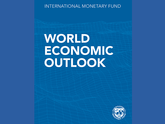
Moldova's banking sector has a sufficient level of risk resilience - the NBM
This is stated in the National Bank of Moldova's (NBM) report on the assessment of financial stability in the second quarter of 2025. As noted, based on the results of the analysis and research conducted at the end of the second quarter, the banking sector was found to have an adequate level of risk resilience, characterized by several risk measurements. The financial stress index was 0.38, which is below the established stress threshold of 0.52, reflecting normal conditions for the functioning of the financial system. The banking sector's vulnerability level was -0.46, which is below the threshold value (0), indicating that there is no accumulation of systemic risks. As noted by the NBM, the risk of “direct contagion” is assessed as low, given that most interbank deposits are held in foreign banks. Although relatively concentrated, the interbank network shows no signs of systemic stress, and the risks associated with interconnections are limited. At the same time, no cases of increased sectoral concentration of loans have been identified. The volume of the banks' loan portfolio issued to non-bank financial institutions (NBFIs) increased by 37.4 million lei (+1.1%) compared to the first quarter, amounting to 3 billion 552.9 million lei, which is equivalent to 3.8% of the banks' total loan portfolio. According to the opinion of banks expressed in the banking lending survey, lending standards remained unchanged for loans issued to non-financial organizations and were slightly eased for loans issued to the population. Demand for loans increased slightly from both non-financial organizations and the population. In the current systemic risk survey conducted among banks, the three most significant risks, according to respondents, remain geopolitical, macroeconomic, and sovereign risks. At the same time, credit risk ranked fourth in the risk rating, followed by cyber risk. The total volume of new real estate loans issued in the second quarter increased significantly by 76.9% compared to the same period last year, but decreased by 1.9% compared to the previous quarter, amounting to 2 billion 798.8 million lei at the end of the period under review. The total volume of new consumer loans increased by 29.8% compared to the same period last year and by 22.7% compared to the previous quarter, amounting to 4 billion 405.1 million lei. The balance of loans with overdue debt of more than 1 day issued to legal entities increased by 1.6%, reaching 949.2 million lei, while the balance of loans to individuals with overdue debt decreased by 5.6% to 549.6 million lei. As a result, the share of overdue loans to individuals decreased to 1.4% (0.2 p.p. lower than in the previous quarter) of the total volume of loans to individuals, while the share of overdue loans to legal entities remained at 1.8% of the total volume of loans issued to legal entities. The share of non-performing (problem) loans, according to national prudential requirements, on loans issued to individuals increased to 3.1% of the total volume of loans issued to this segment of borrowers. This trend is due to an increase in the balance of non-performing real estate loans issued to individuals by 283.6 million lei, which is largely explained by the reclassification of some borrowers into stricter risk categories following the entry into force of amendments to regulations concerning the assessment of certain qualitative criteria when banks issue loans. The risk profile of individual borrowers remains prudent: 68.7% of new loans issued in the second quarter of 2025 had a debt service ratio below 40%, and 88% were below the established limit of 55%. In addition, 98% of new loans to individuals in the quarter under review were issued with a loan-to-value ratio of less than 80%. According to the NBM, prices in the residential real estate market continue to rise, albeit at a more moderate pace. The residential real estate price index, calculated on the basis of asking prices, stood at 222%, up 4.9% compared to the first quarter of 2025 and 33.8% compared to the second quarter of 2024. Credit risk remains the main risk to which banks are exposed. An analysis of the sensitivity of the capital adequacy ratio to a deterioration in credit quality revealed that the sector that will have the greatest impact on the decline in the capital adequacy ratio, given the possible increase in non-performing loans according to prudential standards, is loans issued for the purchase/construction of real estate. At the same time, banks remain resilient to liquidity risk, with solid reserves of liquid assets that allow them to cope with potential crisis situations. In conclusion, the NBM notes that current conditions do not indicate any signs of systemic vulnerability or excessive systemic risk. The assessments reflect the adequate ability of supervised financial institutions to absorb shocks. // 16.10.2025 — InfoMarket







